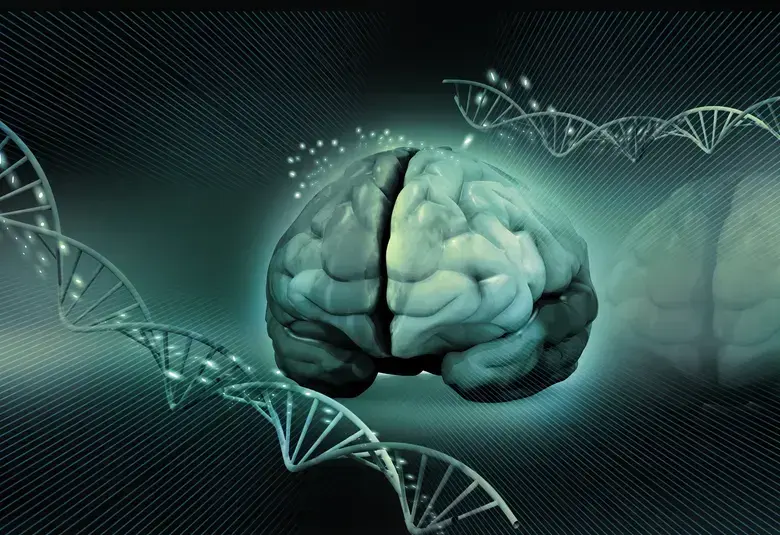The omics — genomics, epigenomics, pharmacogenomics, proteomics and metabolomics — are increasing understanding of migraine pathophysiology and in the future will lead to improved diagnosis, assessment of disease progression, monitoring of treatment, and treatment. Professor Lyn Griffiths, Queensland, Australia, and Professor Gisela Terwindt, Leiden, The Netherlands discussed the importance of their different types of omics studies and their potential contributions to improving migraine management.
What are omics?
Genomics is at least one step removed from the phenotype; proteomics and metabolomics are close to the phenotype
In introducing this scientific session, Professor Dale Nyholt, Queensland, Australia, described the research carried out for the different types of omics:
- Genomics involves gene sequencing, allele mapping and genome-wide association studies (GWAS) and provides information on the genetic basis of disease and potential cause,
- Epigenomics provides information on histone modification and DNA methylation that play a role in gene expression
- Transcriptomics investigates RNA sequencing and post-transcriptional modifications
- Proteomics involves protein profiling and investigating post-transcriptional modifications
- Metabolomics involves metabolic profiling and identifying metabolites, and includes lipidomics (investigating lipid pathways) and glycomics
Professor Nyholt commented that genomics is at least one step removed from the phenotype whereas proteomics and metabolomics are likely to be very close to the phenotype.
Migraine has a strong genetic basis
Migraine genomics, epigenomics and pharmacogenomics
Migraine has a strong genetic basis, said Professor Griffiths, and collaborative consortia have played a key role in identifying genomic loci in polygenic and monogenic forms of migraine through GWAS.1 The majority of identified genes have neuronal or vascular function.1
The contributions of epigenomics and pharmacogenomics to understanding migraine and improving management are evolving, explained Professor Griffiths:
The majority of identified migraine genes have neuronal or vascular function
- Few epigenetics studies have been published to date, but future epigenomics research promises to provide new insights into migraine development, subtypes, and treatment response
- Migraine pharmacogenomics studies promise to inform the development of individualised migraine treatment and understanding drug interactions and treatment response based on a patient’s genes
Proteomics and metabolomics
Proteomic and metabolomics might lead to the identification of new biomarkers and new pharmacologic treatments
Professor Terwindt highlighted the role of proteins and metabolites in migraine as biomarkers that may help in diagnosis, in assessing disease progression, and in monitoring treatment.
Most importantly, proteomic and metabolomic studies might lead to the identification of new biomarkers and pathways and the identification of new pharmacologic treatments for people with migraine not responding to current therapies, said Professor Terwindt.
She highlighted one such study in which proton magnetic resonance spectroscopy and diffusion weighted spectroscopy of 50 migraineurs and 24 controls revealed higher intracellular glutamate levels in the visual cortex of migraineurs without aura during the interictal phase.1
Higher intracellular glutamate levels in the visual cortex of migraineurs without aura during the interictal phase
Professor Terwindt explained that the first step for proteomic studies is to identify biomarkers in large cohorts. Any biomarkers then need to be verified and evaluated in clinical practice before implementation in clinical practice.
Precision and validity are important features of potential markers but have been lacking from many studies. LUMINA — the Leiden University Medical Centre MIgraine Neuro-Analysis Programme —has therefore been set up to ensure precision and validity, said Professor Terwindt.
In any investigation of migraine biomarkers, it is important to decide upon the source of biomarker — whether it is brain, cerebrospinal fluid (CSF), or serum — and whether data are collected from the interictal, preictal or ictal phases of migraine, explained Professor Terwindt.
For LUMINA, it was decided to collect CSF and blood samples interictally in a large cohort of cases with age- and sex-matched controls, and the following potential biomarkers have been evaluated:
High-density lipoprotein metabolites were decreased in all migraine patients
- Amines — glutamine, gamma aminobutyric acid, glutamate and other amines linked to migraine
- Endocannabinoids — because of their role in pain modulation and the migraine comorbidity of depression
- Lipids — because of the increased cardiovascular disease risk for people with migraine
- Sex hormones — because of the preponderance of migraine among women
Omega-3 fatty acids were decreased in males with migraine
Two significant results have so far been published for lipids, said Professor Terwindt. High-density lipoprotein metabolites were decreased in all migraine patients, and omega-3 fatty acids were decreased in males with migraine.3
The other studies are ongoing and results for the endocannabinoid investigations will be published soon.
Our correspondent’s highlights from the symposium are meant as a fair representation of the scientific content presented. The views and opinions expressed on this page do not necessarily reflect those of Lundbeck.




